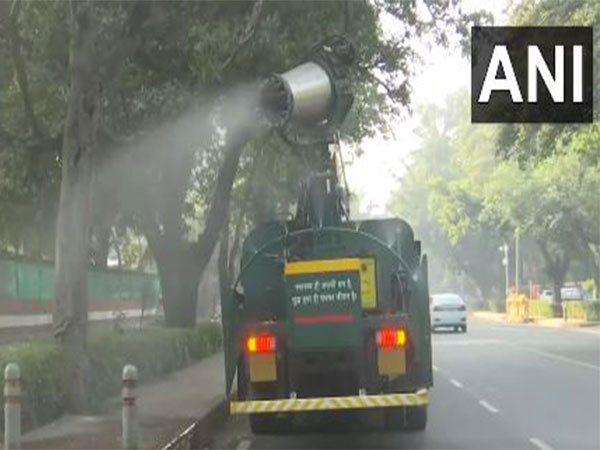Delhi Battles Toxic Air with Water Spray Initiative Amid Pre-Diwali Smog
As air quality in Delhi hits alarming levels, PWD vehicles deploy water sprays to tackle the smog. Despite calls to curb pollution, stubble burning incidents in Punjab persist. Authorities urge Delhiites to light diyas instead of firecrackers to reduce Diwali pollution.

- Country:
- India
As the air quality in Delhi deteriorates to alarming levels, Public Works Department (PWD) vehicles took to the streets, spraying fine droplets of water in an attempt to mitigate the effects of the increasingly poor air quality in the capital on Wednesday. In the lead-up to the Diwali festival, a thin layer of smog has engulfed the city, with certain areas recording an Air Quality Index (AQI) over 300, signaling 'very poor' conditions, according to the Central Pollution Control Board (CPCB).
Notably, at Anand Vihar, the AQI reached 351 by 7:00 am, while Bawana recorded an AQI of 319, Ashok Vihar matched Anand Vihar with 351, and Wazipur reported 327, placing them all in the 'very poor' category. Meanwhile, the AQI in Aya Nagar stood at 290, and Delhi's ITO was at 284, categorizing them as 'poor.' Toxic foam was observed in the Yamuna River at Kalindi Kunj, highlighting the persistent high pollution levels in the river.
In a related protest, Delhi Bharatiya Janata Party (BJP) leaders noted on Monday that as many as 108 stubble burning incidents were documented in Punjab. They staged a protest targeting Punjab Chief Minister Bhagwant Mann over the ongoing air pollution crisis at Kapurthala House. Attempts by a group of BJP leaders to meet the Punjab CM to submit a memorandum were unsuccessful.
Delhi BJP president Virendra Sachdeva pointed out that the 108 cases of stubble burning on October 26 are being overlooked, with ministers from the Delhi government frequently shifting blame to neighboring states Haryana and Uttar Pradesh. With the Diwali festival approaching, the Delhi government has extended a ban on firecrackers until January 1 in efforts to control pollution levels.
Further supporting pollution reduction efforts, Delhi Environment Minister Gopal Rai initiated the 'Diya Jalao, Patake Nahi' campaign, urging residents to abstain from using firecrackers. By lighting diyas at the Babarpur Bus Terminal, Rai emphasized the need for collective action from the public to effectively manage pollution. The campaign aims to both discourage firecracker usage and encourage the use of diyas during Diwali celebrations.
(With inputs from agencies.)










